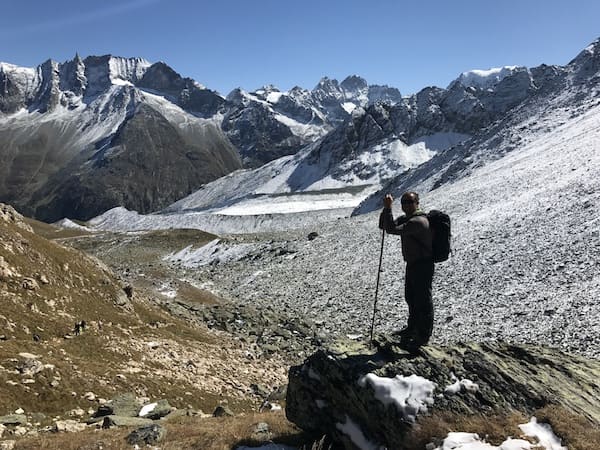
30 Apr What to know about hiking shoes for the Alps
As we mentioned in our last blog, when hiking in the mountains we now often see people in shoes that resemble running shoes rather than in hiking shoes for the Alps. This is causing a lot of discussion in the hiking industry today and there is good reason for that.
Consider the sole
Unlike running shoes, the sole of hiking shoes for the Alps is less flexible than a normal fitness shoe. If the soles are flexible, the shoes will bend while walking with crampons on uneven terrain, and the crampons will not stay on. This is very annoying when you are tired and have a three-hour hike across a glacier, not to mention unsafe. This is a very important and relevant consideration because your guide will not allow you to undertake the hike wearing shoes that are not adapted to the conditions. If he doesn’t question it, then change your guide!
Hiking shoes for the Alps should have a rigid or semi-rigid sole but be aware that this will change your gait, meaning, you will walk differently. This can then cause pain in the knees and the hips. The ideal shoe should have the perfect balance between being crampon-compatible and being slightly flexible so as to offer you enough comfort.
Take your time when buying your hiking shoes
Don’t be embarrassed to spend a lot of time in the shop walking around up and down, or taking the stairs to try out your shoes. If you have even the slightest doubt, leave them and come back again when you have had time to think. And if you have the time, try on many pairs in many different shops as salespeople have different levels of knowledge on this subject.
In the past, we have suggested to our clients that they get their friendly shop assistant from REI to give us a call so that we can brief them on the terrain that you will be trekking on.
Here’s my personal advice (as I have terribly flat feet). Not all of the mountain guides agree with this, but as a woman, my experience has led me to some differing viewpoints on gear for both winter and summer. When I pack, I am prepared to carry the extra weight of a light pair of running shoes that I can change into at the end or before the technical parts of the trek. During these more technical sections, a less flexible shoe is necessary for safety, but before and after those sections, a lighter, more comfortable shoe can be used because it can help you economise your energy. This has helped me many times, and can definitely make the exit of a tough day just that little bit more enjoyable. After all, you want to enjoy the amazing view of the Alps without having to think of how much your feet are aching!
We would love any comments, questions or suggestions on how to choose your footwear and how to find those perfect hiking shoes for the Alps.
Please feel free to drop us a line.
Warm regards from the mountains,
Danielle


